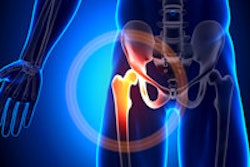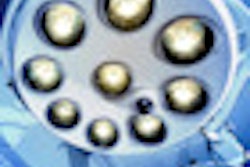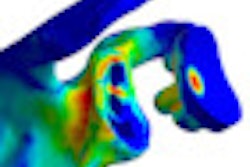A model to measure cup orientation from postoperative radiographs following total hip arthroplasty has been developed at a Swiss surgical technology research center. The validation study was described in an online article in the International Journal of Computer Assisted Radiology and Surgery, posted on 26 July.
The significance of an accurate, reproducible statistical shape model-based 2D/3D reconstruction method to determine cup orientation is that a patient-specific 3D model of the pelvis can be reconstructed using data contained in a single standard anteroposterior (AP) digital radiograph. Substantial errors can be made when a 2D pelvic radiograph is used if the individual pelvis orientation with respect to the x-ray plate is not taken into consideration. CT scan-based methods, which are considered to be the most reliable method for measuring postoperative cup orientation, have the disadvantage of being expensive and not always available.
The importance of determining accurate cup orientation is the fact that mal-orientation of the acetabular component in terms of anteversion and inclination is correlated with prosthetic impingement, dislocation, wear, osteolysis, and prosthetic loosening. The inability to measure acetabular cup orientation accurately limits the ability to determine optimal cup orientations and assess new treatment methods of improving its orientation in surgery.
Guoyan Zheng, PhD, group head of computer-assisted orthopedic surgery at the University of Bern's Institute for Surgical Technology and Biomechanics, and fellow developers have crafted a product that enables users to create a patient-specific 3D model of the pelvis from a single x-ray image using a deformable registration technique. The inclination and anteversion of the cup is calculated with respect to the anterior pelvic plane derived from the reconstructed 3D model.
No specific calibration of the x-ray image, a computer-assisted design model of the implant, or a CT scan is required, according to the authors.
The group's evaluations were conducted on the datasets of 15 men and 14 women, representing a total of 31 hips. The patients ranged in age from 49 to 82 years, but were predominantly older, at a median of 69.4 years. Two observers performed measurements for each dataset twice in order to measure the reproducibility and reliability of the 2D/3D reconstruction method. The datasets consisted of one postoperative x-ray image and images from one postoperative CT scan. Required input of the digital radiograph included pixel size and film-to-source distance.
The validation study demonstrated a mean accuracy of 0.4 for inclination and a mean accuracy of 0.6 for anteversion. The best results were achieved with radiographs that included the bilateral anterior superior iliac spines and the cranial part of nonfractured pelvises. It supplemented an earlier study in which datasets from 10 cadaveric pelvises and five patients were used.



















